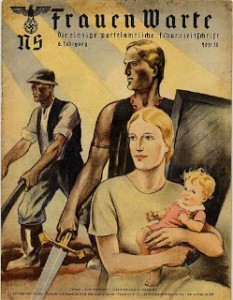The Jews living in Berlin were some of the most assimilated Jews in all of Europe. Why, then, did the Nazis not face more resistance when they began to ship Jews off to concentration camps? The Jews were clearly different from other Berliners, but how were they viewed before the Nazis came into power? Did other German dislike the Jews and want them to be taken away?
In his short story, “The Nowaks”, Christopher Isherwood captures a few different German views toward Jews. There is a Jewish tailor in the neighborhood who sells clothing to people on credit and never pushes for his money back. He is well liked, even though everyone owes him money. “He enjoyed the status of a public character whom people curse without real malice” (p.117). When discussing the tailor with Christoph, Frau Nowak says, ‘ “when Hitler comes, he’ll show these Jews a thing or two. They won’t be so cheeky then” ’(p.117). But Frau Nowak goes on to clarify that she doesn’t want the Jews taken away, saying ‘ “You ask the people round here, Herr Christoph: they’d never turn out the Jews” ’(p.117). This statement seems contradictory to her previous one, and in hindsight, is extremely ironic.
In contrast with his wife, Herr Nowak believes that “we’re all equal as God made us. You’re as good as me; I’m as good as you”(p.110). Herr Nowak, even though he is drunk most of the time and is a working class man, is wise, and probably a communist. He discusses how he and a French soldier met on a road during WWI and parted as “aim”(p.110). He also makes fun of both Jews and Catholics equally, imitating how each group prays (p.123).
The Nowaks don’t seem like people who would turn their Jewish neighbors over to the Nazis, but other Germans did. Frau Nowak said herself that the Jewish tailor gives credit like no Christian would and is well liked, so what does he need to be taught by Hitler? Do the people actually secretly resent him because they owe him money? What was it really about the Jews that bothered Germans?

